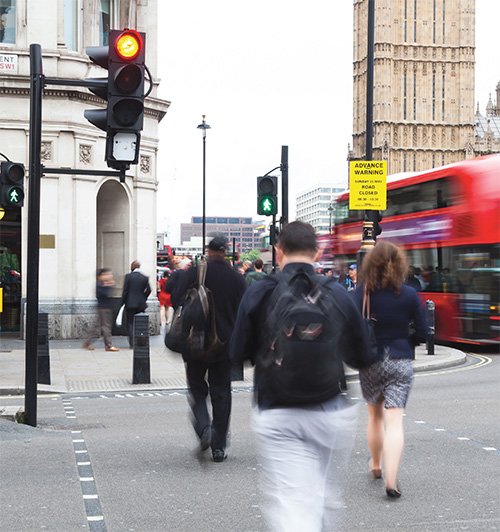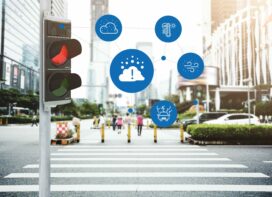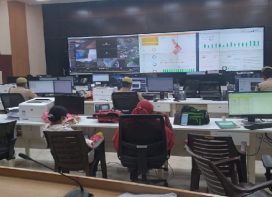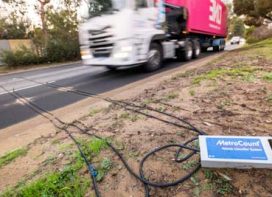We have been hearing a lot about e-rickshaws. It now seems to be a bubble in the air because it still hasn’t come.
Recently a notification is issued which allows them to be manufactured and plied without any registration, something like cycle rickshaws. So, probably the legal requirements are in tune with cycle-rickshaws. But there is an issue here — e-rickshaws cannot cater to trunk routes. When you talk about public mobility there is a trunk route followed by feeder routes. E-rickshaws are best suited for feeder services. For example, a person getting out of a city bus and then travelling further one or two kilometers within that particular area, or in places like monuments, or archaeological areas where pollution needs to be kept in check, can use them. So, e-rickshaws have a very specific kind of purpose and we all are excited to see how things will unfold.
How do you propose to monitor the old and the new rickshaws on the road? Will the old ones not have to be eased out after a while?
I think it is an issue of enforcement and nothing else. So, after a certain age, not only rickshaws, but other vehicles also need to be scrapped. Newer technologies like high security number plates, RFID, cameras installed at multiple locations as in the case of intelligent traffic systems, toll booths, border check posts, etc., will make it extremely easy for us to identify which vehicles are running on the road beyond their expiry dates. This will be an additional tool, apart from our manual routine checkup, which will help us in identifying the rickshaws or other vehicle that operate within a valid permit time and those that operate beyond that.
 We see often that the vehicle is registered in one person’s name, but the person who drives it ends up with committing an offence and the offence happens in one state and he runs away to the third state. So, there is no proper way of enforcement over here. The question is: what kind of initiatives has been taken by the Maharashtra State Road Transport Corporation wherein the offender is caught at the right moment? We need to keep in mind that we are talking about two states here. I think many people may not be aware of the Vaahan and the Saarti systems. These are basically computerized databases of all vehicles and all drivers, those having driving licenses. There is going to be an integrated system for the country as a whole. So, if something happens in, for example, Madhya Pradesh and that person commits some offense in, say Bhopal and if his driver’s license is entered by the Bhopal police and if his original driving license was issued by Mumbai RTO, then Mumbai RTO will automatically get notified. So, the systems will start talking to each other very soon.
We see often that the vehicle is registered in one person’s name, but the person who drives it ends up with committing an offence and the offence happens in one state and he runs away to the third state. So, there is no proper way of enforcement over here. The question is: what kind of initiatives has been taken by the Maharashtra State Road Transport Corporation wherein the offender is caught at the right moment? We need to keep in mind that we are talking about two states here. I think many people may not be aware of the Vaahan and the Saarti systems. These are basically computerized databases of all vehicles and all drivers, those having driving licenses. There is going to be an integrated system for the country as a whole. So, if something happens in, for example, Madhya Pradesh and that person commits some offense in, say Bhopal and if his driver’s license is entered by the Bhopal police and if his original driving license was issued by Mumbai RTO, then Mumbai RTO will automatically get notified. So, the systems will start talking to each other very soon.
When is it expected to happen?
As far as my state is concerned, I can only say that once we are given that particular flexibility by the central agency, that is NIC, we should be doing it as soon as possible. I cannot really give a proper timeframe because it is a matter of more than one state.
Have satellite cabs like Uber and Ola made your life difficult?
I don’t think any technology makes anybody’s life difficult. It is how we use and adopt that technology in the larger interest of society that is important. There are certain issues with respect to aggregators, that is Uber and Ola vis-à-vis traditional taxis, that is hail taxis or yellow-black taxis vis-à-vis radio taxis like Meru and others. So, the problems that one is hearing in the media and otherwise is basically of legislative framework. Because when the laws were framed, nothing of this sort was even thought of. Nobody knew that smart phones & apps, and Uber & Ola would become a part of our lives. So, the only thing that we need to do is to have a proper regulatory framework which will allow a proper level playing field for all the players and allow the market to develop in such a fashion that, number one, commuters get rides at reasonable price and number two, these players also survive in a stiff economic competition.
There was also Vision 2020 for the road safety. So, anything in specific for the Maharashtra transport department as such?
Yes, the foremost priority is to decrease the number of deaths due to road traffic accidents. We are losing around 13,000 people every year in the state of Maharashtra. That is a big number, substantial number, and as I told earlier, the road safety initiatives that are being planned aim at reducing this number by around 20 percent over the next year. That is the target.
 TrafficInfraTech Magazine Linking People Places & Progress
TrafficInfraTech Magazine Linking People Places & Progress


